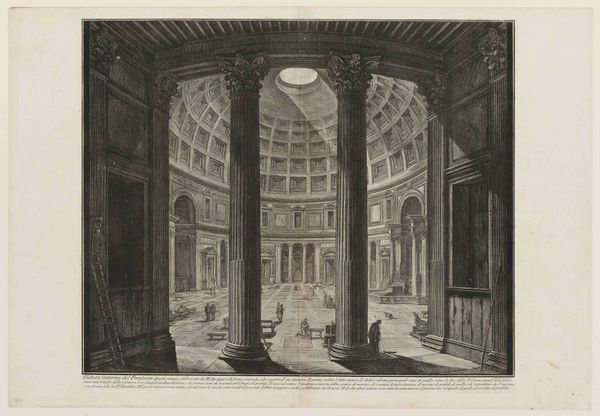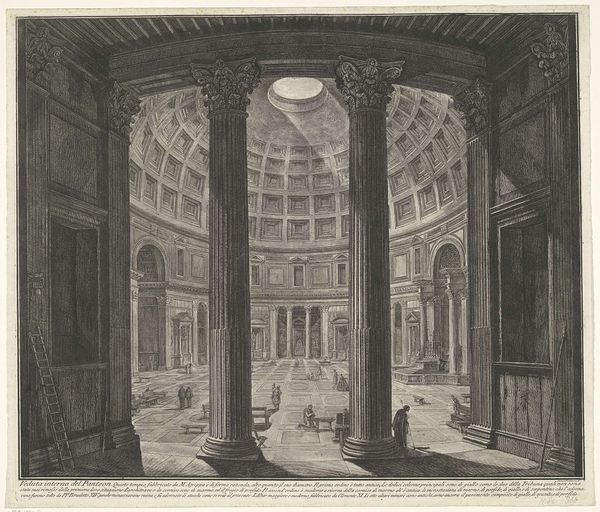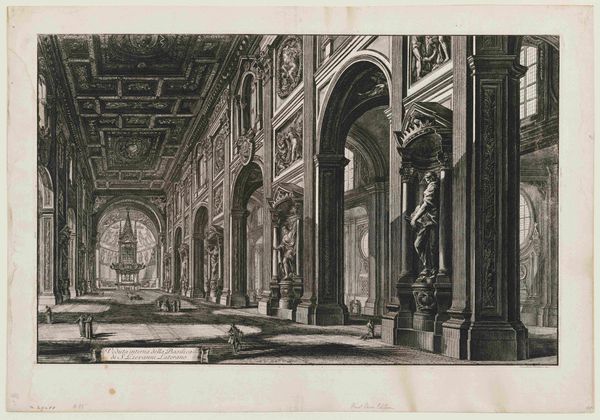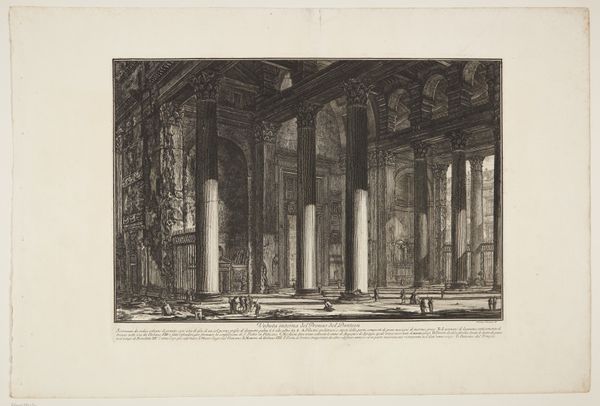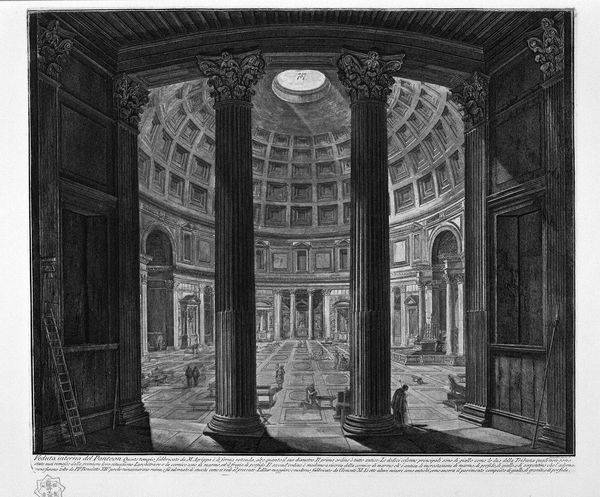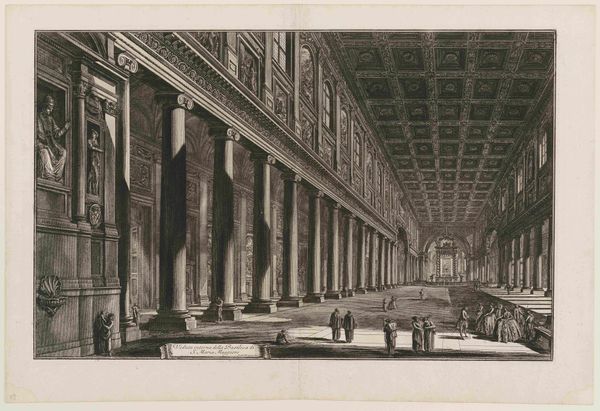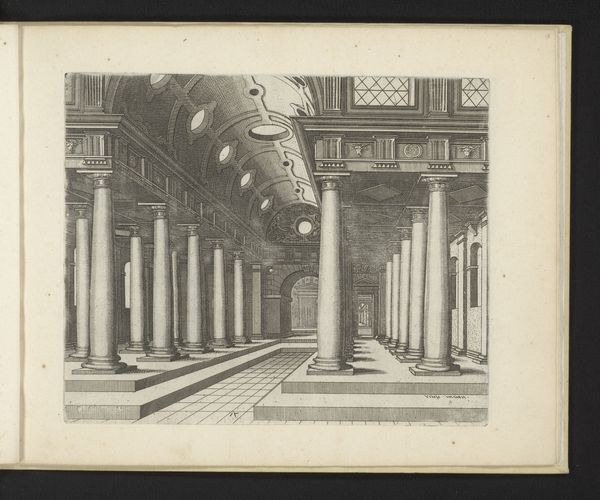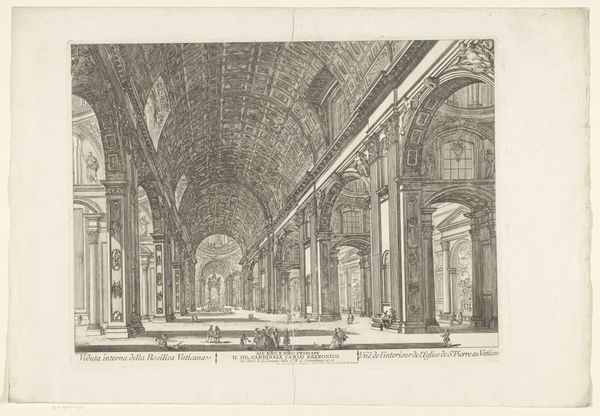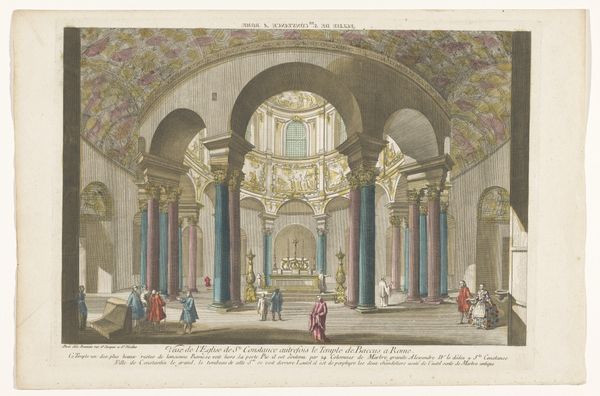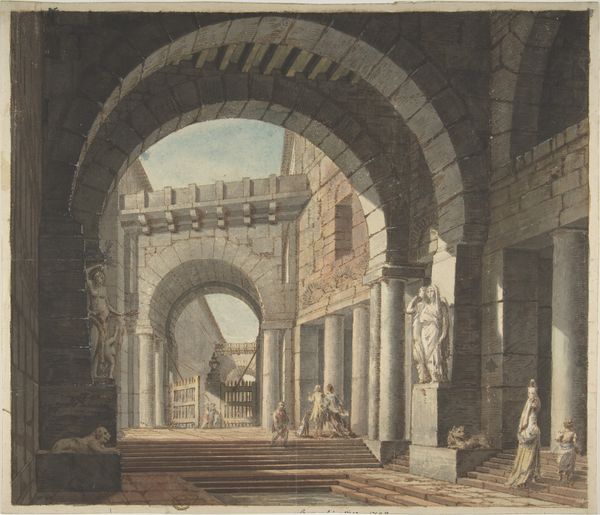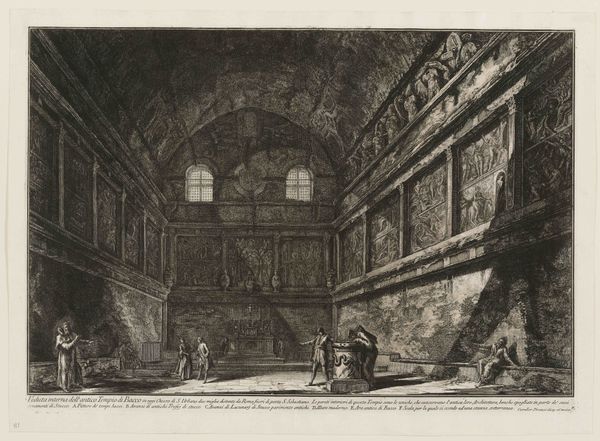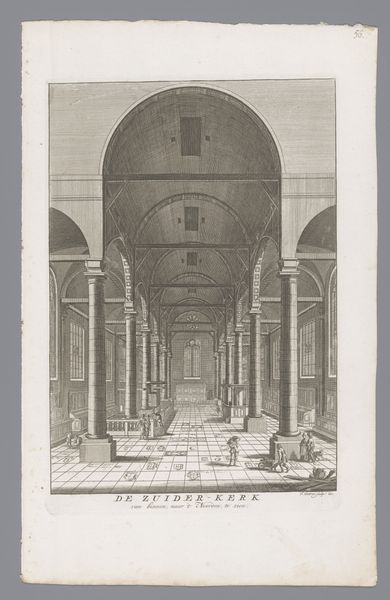
print, etching, architecture
#
neoclacissism
# print
#
etching
#
architecture
Dimensions: 15 5/8 x 21 7/8 in. (39.69 x 55.56 cm) (plate)20 3/8 x 28 3/8 in. (51.75 x 72.07 cm) (sheet)
Copyright: Public Domain
Editor: This etching is Giovanni Battista Piranesi's "The Pantheon," likely created between 1768 and 1778. It’s breathtaking, but something about the scene feels unsettling despite the grandeur. The tiny figures are dwarfed by the architecture. How do you interpret this work? Curator: It's a fascinating piece. Notice how Piranesi uses the Pantheon, a symbol of Roman imperial power and ingenuity, to evoke both awe and, as you sensed, a certain unease. What do you make of the light flooding in from the oculus? Editor: It's the brightest part of the image, drawing my eye upwards. Is it meant to be symbolic? Curator: Indeed. Light, especially from above, often symbolizes divine presence, knowledge, or enlightenment. But here, combined with the building’s sheer scale, it also speaks to the ambition of humanity to create something eternal, something that rivals the heavens themselves. Do you see a tension in that ambition? Editor: I do. It's as if Piranesi is asking if such a thing is even possible. Is it hubris? Curator: Perhaps. The architecture’s weight, those monumental columns, the coffered dome – they press down, a reminder of earthly limitations even as the light streams in. Piranesi understood the psychological impact of Roman grandeur, the way it could both inspire and intimidate. Editor: So, it's more than just a pretty picture of a famous building? Curator: Oh, much more. It's a reflection on power, mortality, and the enduring human desire to leave a mark on the world. These Roman symbols persist, impacting viewers, artists, architects, and nations over centuries. What do you make of that staying power? Editor: It makes me think about what we value, what symbols we choose to immortalize. Thanks, that gave me a new way of seeing it! Curator: The pleasure was mine. It’s important to question those cultural choices represented here, while examining what is truly timeless in art.
Comments
No comments
Be the first to comment and join the conversation on the ultimate creative platform.
